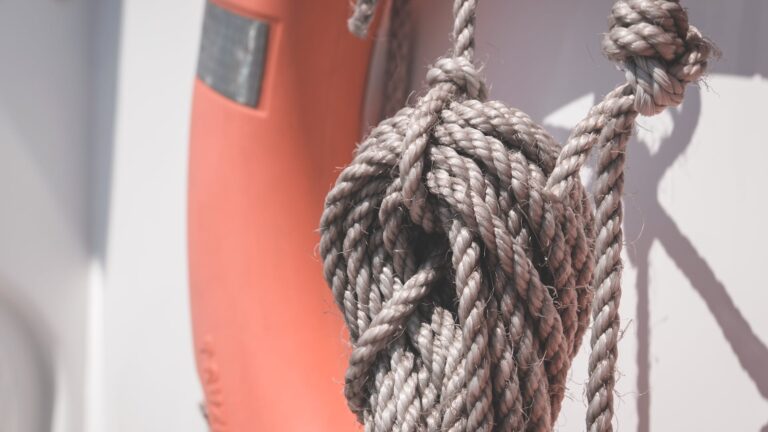Where is the safest place to be during high winds?
- Introduction
- What is High Wind
- Causes of High Wind
- Signs of High Wind
- Dangers of High Wind
- How to Prepare for High Wind
- How to Survive a High Wind Storm on a Boat
- Tips for Sailing in High Winds
- Safety Protocols for Boats in Storms
- How to Prepare Your Home for High Wind
- Conclusion
Sailing in High Winds: Where is the Safest Place to Be?
High winds can be extremely dangerous, especially on the open ocean where sailors must be aware of their surroundings at all times and prepare for any sudden changes in weather or sea conditions. Knowing where to go in the event of a high wind warning or severe thunderstorm warning can help keep you and your crew safe from harm’s way. In this article, we will discuss what high wind is, the dangers it poses, and tips on how to stay safe during a storm while sailing or at home.
## What is High Wind?
High wind is defined as any sustained wind speed over 38 mph (61 km/h). It can come in the form of gusts or sustained winds and can reach up to 70 mph (112 km/h) or more depending on the severity of the storm system that’s passing through an area. In some cases, high winds can even be classified as a tornado if they reach speeds of over 110 mph (177 km/h).
## Causes of High Wind
High winds are caused by warm air rising over cold air, creating an area of low pressure known as a cyclone or storm system which sucks in nearby air from all directions and creates strong winds that swirl around it like a whirlpool effect. This low pressure area can become even stronger if there are mountains nearby which cause additional uplift, further intensifying the system’s winds speeds and making them even more dangerous for sailors who may find themselves close by when this occurs.
## Signs of High Wind
Knowing how to identify signs that a high wind warning has been issued or is about to be issued is essential for sailors who want to stay safe while out at sea. One way to determine if there’s an impending storm system is by looking at weather radar maps which show dense clusters of clouds moving towards one another with strong winds blowing around them as they do so – this indicates an area with potential high winds that should be avoided if possible. Other signs include darkening skies and strong gusts that come out of nowhere accompanied by heavy rain and thunderstorms lasting more than 15 minutes at a time – these are all telltale signs that you should start preparing for high wind conditions if you haven’t already started doing so already!
## Dangers of High Winds
High winds pose several dangers for sailors which include capsizing boats due to powerful gusts, being swept away by strong waves caused by choppy seas, and even experiencing hypothermia due to being exposed too long in cold waters caused by strong storms passing through an area quickly. Additionally, large pieces of debris such as trees or other objects can become airborne during storms with high winds and cause serious injury if they strike someone directly – this is why it’s so important to stay away from windows during these types of weather conditions!
## How To Prepare For High Winds
When preparing for sailing in high winds it’s important that you check your boat beforehand to make sure everything is properly secured such as sails, lines, and any other loose items that could potentially get caught up in the wind and cause problems down the line when out at sea. Additionally, make sure you have enough supplies onboard such as food & water rations just in case you find yourself stuck out there longer than expected due to bad weather conditions! It’s also important that you know how to properly use your safety equipment onboard including life jackets & flares so that you can signal rescue teams should something go wrong during your voyage!
## Tips For Sailing In High Winds
When sailing in high winds there are several things one must keep in mind: always maintain control over your boat by keeping its bow pointed into the waves rather than away from them; reduce sail size when necessary; always keep an eye out for other vessels nearby; avoid anchoring near shorelines; stay away from shallow waters; use GPS navigation systems if possible; have plenty of fuel onboard before setting sail; and lastly never sail alone! Taking these tips into account will greatly increase one’s chances of remaining safe while sailing during periods with extreme weather conditions!
## Safety Protocols For Boats In Storms
When storms pass through areas with large bodies of water like oceans or lakes it’s important that boats take certain safety protocols into account such as finding shelter near shorelines where possible but staying away from shallow waters since they may become even more hazardous due to their limited depth; avoiding large vessels such as freighters since their wake may become unpredictable due to heavy seas; never attempt crossing bodies without proper preparation beforehand since currents may become especially strong during storms; always having someone onboard who knows how operate radio communication systems should something go wrong; using life jackets at all times until safely back ashore; and finally never going out alone – always have someone experienced with you onboard who knows what they’re doing!
## How To Prepare Your Home For High Winds
When preparing your home for high wind conditions it’s essential that you secure all doors & windows properly by reinforcing them with clips & braces designed specifically for this purpose – this will help ensure they don’t break open during storms & cause damage inside your home instead! Additionally, make sure items outside your house such as outdoor furniture & plants are tied down securely so they don’t become airborne during severe weather conditions & create potential hazards inside your home instead! Lastly, consider investing in additional items like storm shutters & boards which will provide extra protection against flying debris & broken glass should anything strike your home directly!
## Conclusion
Sailing during periods with high wind warnings or severe thunderstorm warnings requires extra caution since these conditions pose serious risks not only on boats but also homes located near large bodies of water too! Knowing how identify signs indicating impending storms, prepare both yourself & vessel ahead time before setting sail, understanding safety protocols when on board & back ashore alike are all keys towards staying safe when facing potentially life-threatening weather conditions like those associated with strong storms passing through an area quickly!







